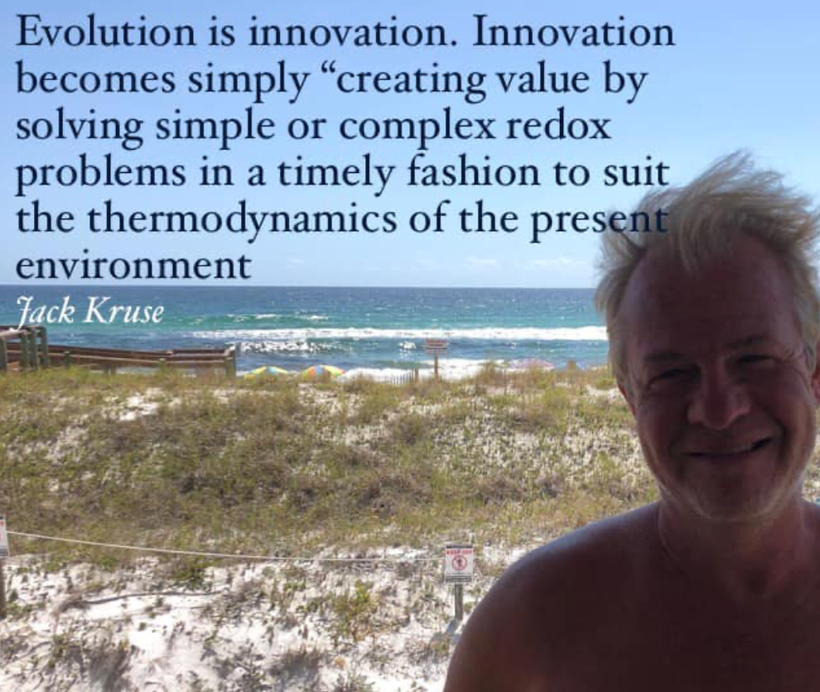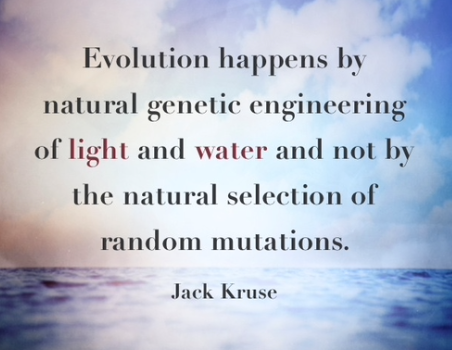The Melanin Renovation Rx is based on Noether’s theorem, which is the key missing piece. The theory states that every differentiable symmetry of the action of a physical system with conservative forces has a corresponding conservation law. The symmetry in the mammalian physical system is based on UV light. Time symmetry implies energy conservation. So, what happens to mammals when they lose energy? They lose time symmetry. In other words, time flows differently backward and forward. There was a time on early Earth that the TCA cycle only flowed counterclockwise because there was not a lot of oxygen or as much UV light around.

It sounds incompressible and unimportant until I remind you of what you just learned about the TCA cycle in the last few blogs. In modern times, biochemists are familiar with it running forward clockwise with plentiful oxygen and sunlight is pumped into the system every AM, and it rotates counterclockwise when these conditions are not met. The implications of this rotational symmetry change are enormous for you understanding. Why? Your time experience varies depending on the direction of the spin of this cycle in your cells. Sounds crazy doesn’t it?

Theories of criticality in physics have been successfully applied to biology. The mathematical core of these theories rests upon the idea that a “phase transition,” which can be either critical or not, may be described as a point along the line where the intended control parameter runs. For example, the ferromagnetic/paramagnetic transition of iron and oxygen takes place for a precise temperature value, the Curie temperature.
Remember that light and temperature control the entropy flow in your circadian clock mechanism. When you realize this, you might begin to see how people experience time differently in their lives

If you paid close attention to the video above, you’d have heard that energy conservation implies time symmetry. It also follows that anytime there is a violation of time symmetry, the energy conservation of the system has been violated in some fashion. This happens when mtDNA is altered, melanin is lost, or water is not created in cells from metabolism. All of these things change oxygen tensions inside of cells as a result. All these things cause our cells to liberate more light than we should. This light liberation changes the AMO physics in mitochondria. That is what the ROS and RNS signal tells the decentralized clinician. These ideas are all buried in the slide below.

What facts about Nature isn’t in the slide above? Most centralized scientist believe ROS is associated negatively with cell function. It just is not true. ROS is not inherently negative for cell function; instead, it plays a complex role in regulating various cellular QUANTUM processes that centralized biology has not stumbled upon yet. The interplay between ROS, endogenous biophoton creation, and low intensity laser creation inside of cells offers opportunities for the centralized audience to rethink their beliefs and approaches to understanding cell biology. Most of centralized science has no idea that cellular conditions involving elevated ROS production (chronic diseases like diabetes) are associated with increased low-intensity light therapy sensitivity. The reason is quite simple. Diabetic tissues have lost most of the sotred photonic energy at the electronic and vibrational levels in cells. Diabetic cells emit higher amounts of biophotons to their environment in an attempt to raise their own ROS to actually stimulate higher ATP production. The problem is oxygen tensions in diabetics is low, along with biophoton power and intensity so that endogenous light production for regeneration becomes improbable. The detection of biophotons is now well established in the biophysical literature, is also associated with the production of ROS and the cellular redox state. Low intensity light therapy via PBM which mimics what red light from the solar spectrum normally gives the semiconductors in cells. This light also has the potential to induce cellular effects through accelerated ATP production. This paper here: HYPERLINK should blow your socks off. When I read it in 2010 I was stunned.
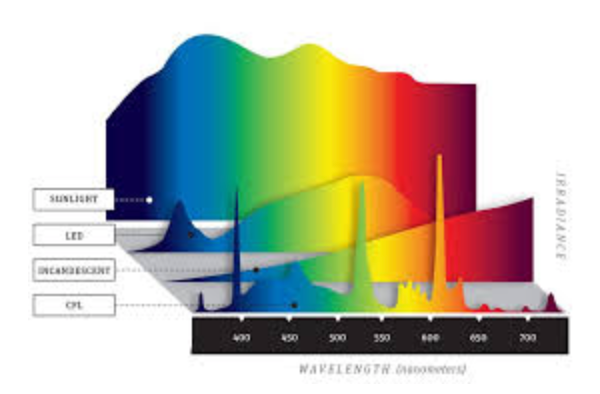
Humans no longer live in the light this mechanism is designed to work with. This is a big part of why we have chronic disease epidemics that we do today. Few see how light is the driver of the entire process. By the time this blog is done, I think you will have enough data to show you why I am adamant that light trumps food at all the most critical levels in cells.
WHY DOES COLD HELP MAMMALS ALSO CONSERVE TIME?
When the temperature decreases and passes through that point, the magnetic orientation organizes along one direction, and magnetism appears. When the temperature increases through that point, disorder prevails, and magnetism disappears. Magnetism emerges from the system’s atomic-molecular organization. Think of mitochondrions as organelles that create paramagnetic chemicals (free radicals) by altering the atomic lattice of atoms fed into it. Most of the atoms fed into mitochondria are not paramagnetic. Many of the atoms that come from mitochondria have distinct magnetic fingerprints. Those fingerprints emerge from alterations of the AMO physics that are occurring inside the organelle.

Mammals’ criticality begins with UV light because it works with mtDNA, quantum dots, and melanin to create VUV-IR light inside a cell. When the critical amount of these entities goes missing inside mammals, they suffer a loss of healthspan or a loss of time. Their TCA cycle does not spend most of its time spinning in a clockwise fashion. When they get enough AM light, and sunlight during the day, they become robust and antifragile because the TCA cycle is operating as it should. When they do not, they get sick and die sooner than they should.

The TCA cycle highlights this time symmetry idea. The same biochemical pathway is used to create and destroy cells. I have told you many times that everything can and should be thought of as a clock. That is clearly how Nature views the TCA cycle when you view it from this perspective.
Very recently in this series of blogs I told you about an experiment in 2012 that showed us that the laws of physics are not time symmetric. It was buried from most people’s awareness because the experiment occurred at the same time the Higgs boson was discovered. Prior to this 2012 experiment, centralized science believed, that whether you run “a clock” forward or backward, most believed the laws of physics to be the same because of Noether’s theorem. The 2012 experiment showed us otherwise and I became quite happy because it explained to me really what the TCA cycle was doing and why mammals lose light when the TCA cycle is spinning counterclockwise. During this shift in time, we should expect a change in energy based on the relationship of conservation laws to time time symmetry. That was the point of showing you the video above. The TCA cycle is a cell’s difficulty adjustment in how it tells time. I want you to understand that when time is the currency in question, energy has to be expended and it is lost to the environment. When this happens aging manifests. This is truly how time is created in biological systems based on a proof of work mechanism.

This concept of time is fundamental to our way of thinking. It is derived from the more basic concept of the order in which events occur. Given the perspective I am trying to show you, I want you to ask yourself the following questions. Who or what should be in charge of time if putting someone in charge is not allowed in the system? How can you have a reliable clock if there is no central frame of reference? The key here is to understand in your cell, a mitochondria is the time machine that houses this TCA clock. That TCA cycle mimics a difficulty adjustment in the cell. Can I just make energy or do I have to make things I need to operate my cell? Got it? How that clock works is based on how often it senses the sunrise in its environment. I have brought this message to social media for 20 years.

AMO PHYSICS INSIDE OF THE MITOCHONDRIA IS CRITICAL
This criticality of this idea scales and corresponds to the appearance of a “coherent structure” in mammalian cells, that is, space and/or time correlations at all scales, which at the transition point (melanin renovation point) give a “global” aspect to the new physical object. These ideas are pretty relevant to analyzing quantum actions buried within biological organisms.
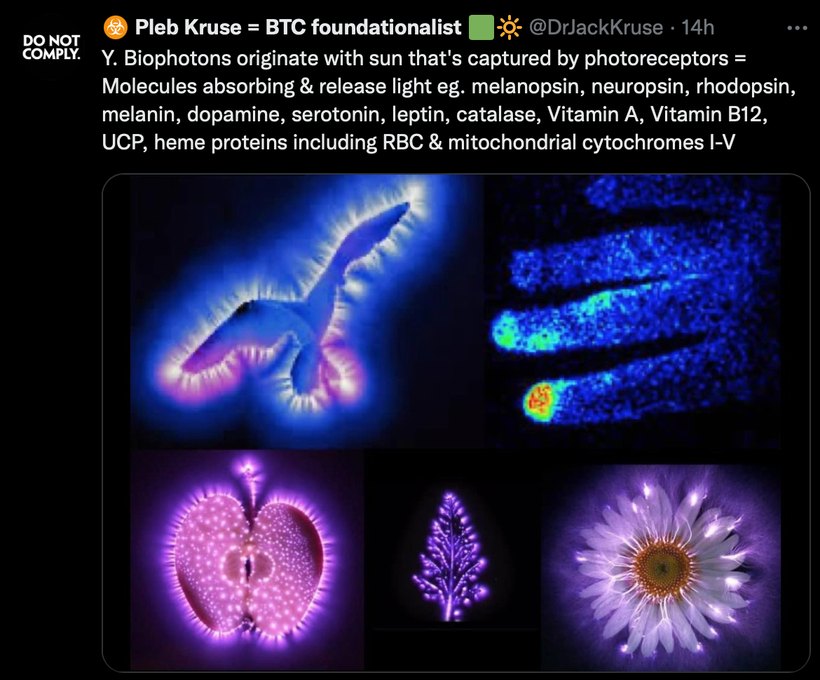
Melanin is critical in maintaining the AMO physical organization of the mitochondria and the functioning of the TCA cycle. Why? Melanin is only translated from its parent gene when UV light is present in the mammalian environment and or its tissue. This point cannot be magnified enough of how critical this relationship is to light. No other gene is linked to smallest part fo the visible spectrum of the sun and this same frequency of light is linked to every single biophoton cells release. It is a remarkable connection in nature that has gone unnoticed by centralized science.

Biological systems, on the other hand, exhibit criticality across multiple parameters such as genetic variations, environmental changes, and interactions with other organisms. This ongoing criticality allows for flexibility and adaptability in response to changing conditions, ensuring the survival and evolution of the organism.
Furthermore, the concept of criticality in biology extends beyond individual organisms to entire ecosystems. Ecosystems are complex networks of interacting species and environmental factors, and their stability and resilience are maintained through a delicate balance of interactions. When this balance is disrupted, it can lead to catastrophic shifts in the ecosystem, such as species extinctions or ecosystem collapse.
Overall, the concept of criticality in biology highlights the dynamic and adaptive nature of living systems, and underscores the importance of studying and understanding the complex interactions that govern biological processes. By recognizing and studying critical transitions in biological systems, we can better understand how organisms and ecosystems respond to environmental changes and potentially develop strategies for conservation and management.
Circadian control in a tissue is an ideal example of how biology builds its most important criticality. Its efficiency is correlated with mitochondrial redox power between -440meV to -200MeV. Outside this “critical” zone, life has problems. Without the maintenance of this redox zone, the clock within the time machine is altered, and mammalian health metrics fall apart.

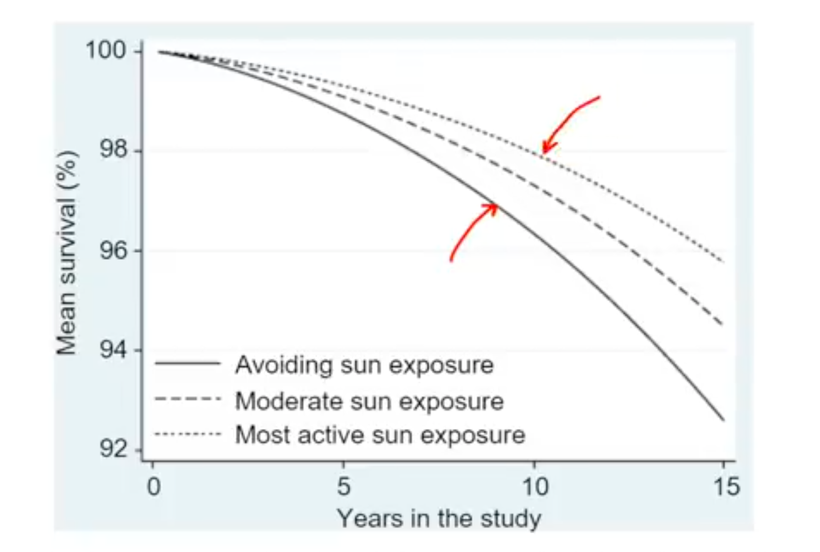
I submit to you that both of the pictures above are showing you Nature’s recipe for time buried in living systems. The first picture you are well acquainted with if you are a scientist. The second one is for mathematicians which also shows how light time shifts mammalian longevity.
Life solves this problem by re-inventing time itself. It says no to seconds and yes to mitochondria to create its own version of biological time stamping in cells. All clocks rely on periodic processes, something that we might call a “tick.” Mitochondrial periodicity is linked to AM sunrise and this begins the “tock” that clicks in the TCA cycle. The frequency of your clock — how often it ticks — depends on its use-case with the light choices you make. Your clock is an atomic optical lattice clock.
Most clocks you are familiar with have a fixed frequency. After all, we want to know the time precisely when we are going to a meeting or a class. There are, however, clocks that have a variable frequency. Your circadian clocks are based on the variable frequencies of how the sun changes in a day. Those clocks are called metronomes. A metronome has a variable frequency that you can set before you make it tick. While a metronome keeps its pace constant once it is set. This is why AM sunlight is irreplaceable in humans. It sets the pace for the TCA cycle. This makes the TCA act like a difficulty adjust knob in the clock.

While time causality is essential in biochemical pathways, it is not sufficient to explain biological time keeping. This is why we have molecular clocks. They focus on time causality. The more counterintuitive reality of timing in the mitochondria is that they need unpredictability to work well. Why do we need two ways of handling time? It turns out we need unpredictability for time to flow for our quantum realm in cells. In the physical realm, we observe natural processes to describe the flow of time. We observe a general increase in entropy and call that the arrow of time. Even though the laws of nature seem to be oblivious in regards to the direction of this arrow in most cases, certain things can’t be undone, practically speaking. You can’t unscramble an egg, for example..
Similarly, entropy-increasing functions are required to establish an arrow of time in the quantum realm in mitochondria where subatomic particles are being used for timing. Just like it is practically impossible to unscramble an egg, it is practically impossible to unscramble the epigenetic signatures that control the genome. When timing is off in your mitochondria that is precisely what happens to your DNA and that is what causes genomic shifts in cancer.
In biology, the proof-of-work mechanism is physically linked to what happened directly with the sun that day. It is not just a record of an event — it is the event itself.
Without this controlled increase in entropy in cells, we could go forward and backward in time without consequence. Cells rely upon two sources of unpredictability: biochemical reaction times and the proof-of-work mechanism in sunlight’s energy. Just like nobody can predict what your Twitter feed will look like tomorrow, nobody can predict what the next human offspring will look like in the future either. This is what powers evolutionary change. This is how biological timestamping operates. It is not the world Darwin saw. It is a quantum mechanical process that uses light to create a ledger of time we call life. How is that for a new way to look at yourself?
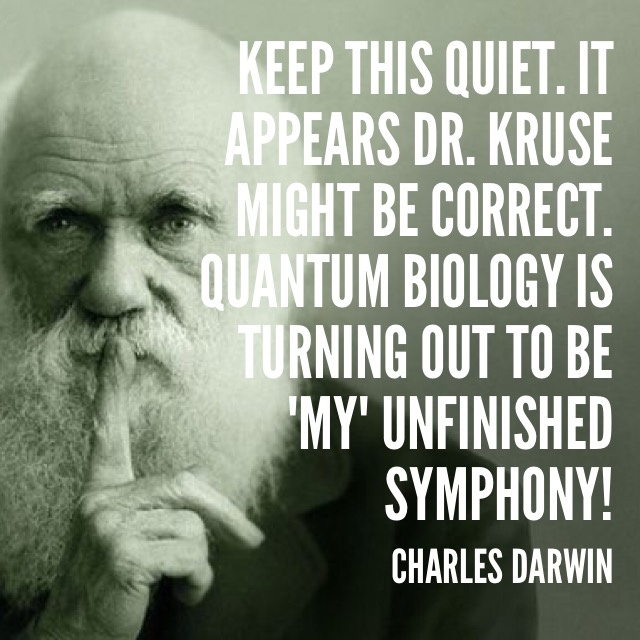
SUMMARY
In a mitochondria, all we have is subatomic particles which contain data from our environment. It should follow then, that the biological realm is informational in nature, the obvious conclusion is that computation is all we have. If your world is made of data, manipulation of data is all there is. This is why Nature built a mitochondria after endosymbiosis. She needed a time machine to make complex life.
Proof-of-work works in Nature-to-cell setting because it is trustless, and it is trustless because it is disconnected from all superfluous inputs — such as the readings of clocks, food, your family’s opinions, or the narrative of social media. It relies on one thing and one thing only: computation requires work, and in our universe, work requires energy and time. The brilliant thing about cell biology’s proof-of-work mechanism is that it creates its own reality, along with its own space and time.
Einstein proved time is relative, and simultaneity is nonexistent. This fact alone makes all timestamps — especially across large distances like we have in biology — inherently unreliable. This is why the SCN needs to be time stamped every morning by AM sunlight. It is also why your iPhone needs to update its GPS coordinates to work. It also explains fully why timestamps of GPS satellites have to be adjusted constantly, by humans on the surfaces of Earth to make tech gear operate properly. For life, biological timestamping has to be very precise to maintain health. If it is not chronic disease is the result. This is why evolution built the TCA cycle to function in spontaneous fashion. See Nick Lane’s picture below. Nick still has not figured out why Nature did this.

The reason was simple. Life has to be costly in time and not in energy. The TCA cycle is the difficulty-adjustment in cells. It’s evolutionary function is about keeping a constant time in cells, not a constant level of immunity in all tissues or in energy expenditure. We know the TCA cycle varies its energy production in various tissues. Using the TCA cycle spin was an ingenious early step in evolutionary design because longevity has to be costly in time, not energy. Time is the most valuable asset in Nature because it has a fixed quantity. Energy can be sourced in many ways quantum mechanically by cells. if you are understanding this blog well now, Noether’s theorem says that energy conservation is LINKED to time symmetry. This means that every improvement in energy generation in cells over evolution would allow life to create time. Time is the only thing cells cannot make more of. They became able to build complexity because they began to harvest more energy from the environment. That is what the picture above Nick’s head really says, but Nick is yet to realize it. I hope you do now too.
Nick Lane is correct that understanding why the TCA cycle underpins life is a great mystery to be solved. I am giving you my solution in this blog. It has been in my head for 20 years. The TCA is the biological difficulty adjustment life needs because it is essential as some of the amino acids its uses.
Because, without it, the internal clock of mitochondra would tend to go faster and faster as more biochemical pathways join the biological network in cells. It would speed up biosynthesis pathways we use to create offsprings via sex. We would quickly run into the coordination problem that mitochondria was built to solve as evolution’s time machine. Cancer is this coordination problem. This is why light stress increases ATP production. ATP production is telling us something about the NAD+ to oxygen difficulty adjustment in mitochondria. Something is awry in our quantum timing mechanism. This story goes way back in the blogs. Don’t believe me? READ IT. Note the date. The ideas in that blog began in my head in 2000-2004. You likely never saw it this way before today.
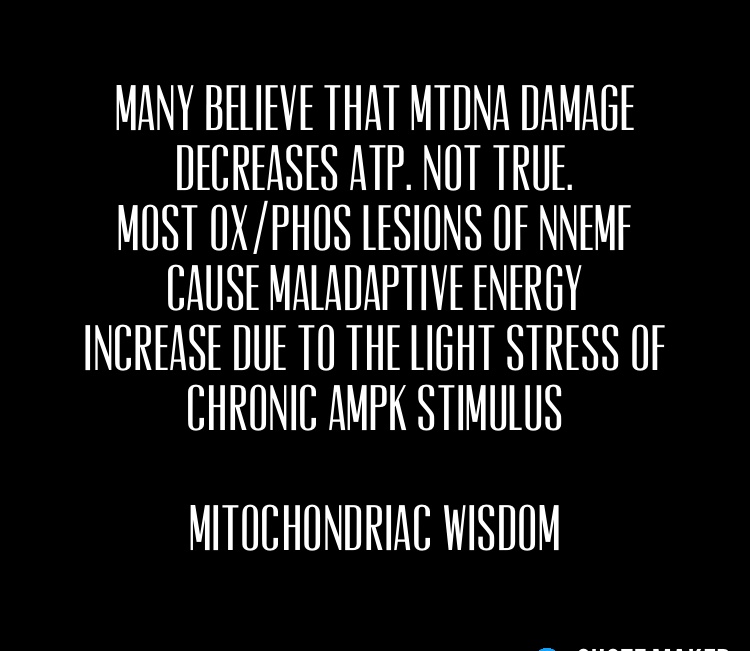
By viewing living entities as extended critical transitions, we can see them as dynamic systems that continually renew and adapt their structure. This perspective allows us to understand the complexity of biological processes in a new light, recognizing that they are not just static phenomena, but rather evolving and changing systems. This can help us overcome the challenge of analyzing the intricate and nuanced nature of living matter, providing a framework for studying and understanding biology in a more interconnected way. This is the idea buried deep in the QUILT document. Ultimately, this change in perspective from physics to biology offers new insights and approaches to unraveling the mysteries of life.
There is a very common belief in humans in a divine force or energy that gives life to all living beings has been prevalent throughout human history and has shaped the way we view life and existence. It has provided a framework for understanding the purpose and meaning of life, as well as guiding moral and ethical behavior.
The concept of life as a gift from a higher power has been a source of comfort and hope for many people, offering a sense of purpose and belonging in a vast and often mysterious universe. It has also served as a basis for the belief in an afterlife or continuation of the soul after death, providing solace in the face of mortality.
While the scientific understanding of life has evolved and advanced over time, the religious and spiritual concept of life as a divine gift remains a powerful and enduring belief for many people around the world. It continues to shape our values, beliefs, and behaviors, influencing how we live our lives and how we view the world around us. Ultimately, the concept of life as a sacred and precious gift reminds us to cherish and respect all living beings, and to strive for a more harmonious and interconnected existence.

Some argue that the theory of evolution through natural selection contradicts the second law of thermodynamics, which states that entropy, or disorder, in a closed system will always increase over time. They claim that the complexity and organization seen in living organisms goes against this principle, as it suggests a decrease in entropy rather than an increase.
However, proponents of evolution point out that the Earth is not a closed system, but receives energy from the sun, allowing for the increase in complexity and organization seen in living organisms. They argue that the second law of thermodynamics applies to isolated systems, not open ones like the Earth.
Ultimately, the debate over evolution and thermodynamics continues to be a contentious issue, with both sides presenting compelling arguments. However, many scientists and scholars maintain that there is no inherent contradiction between the two concepts, and that they can be reconciled within the framework of modern scientific understanding.
As yourself this question: Is life a property of matter that does not naturally exist? Might life be a phase of matter that we invented with the help of the environment. On the most fundamental level, all matter that exists is just an arrangement of atoms and their constituent particles, is it not?

This perspective challenges the traditional notion of life as a distinct and separate concept. Instead, it suggests that life is simply a human construct used to categorize certain arrangements of matter. This mindset can lead to a greater appreciation of the interconnectedness and complexity of the universe, blurring the lines between living and non-living entities. It invites us to question our assumptions about what it means to be alive and opens up new possibilities for understanding the nature of existence.
Are mammals/humans, for instance, a bag of special water filled with 26-element human molecules that has been synthesized, by the operation of universe, over the course of the last 13.7 billion years? Or is this something more to this reductionist view point?
Living entities are not “just” processes but something more: they are lasting, extended critical transitions, always transient toward a continually renewed AMO structure. In general, physical processes do not change fundamental symmetries; to the contrary, they are primarily meant to preserve them.

Living organisms exhibit emergent properties (quantum mechanical) that cannot be fully explained or understood by simply breaking them down into their molecular components. The photomolecular effect is one example. These properties arise from the interactions and relationships between molecules and cells, and they give rise to the incredible diversity and complexity seen in the natural world.
Therefore, while it is important to recognize the fundamental chemical and molecular basis of life, it is also crucial to appreciate the complexity and emergent properties that make living organisms more than just the sum of their parts.
From Nature’s view, the world should be seen as only connections, nothing else. Everything is based on probability and nothing is based on cause and effect. This is the perspective of this decentralized quantum biologist.

^^^^This is cite #7.
CITES
1. Principles in Geology, by Charles Lyell, 1868.
2. The Origin of Species, by Charles Darwin, 1859
3. http://www.staroceans.org/e-book/Haber_Stornetta.pdf
4. https://www.math.columbia.edu/~bayer/papers/Timestamp_BHS93.pdf
5. https://medium.com/codex/power-of-merkle-trees-1e44819e9639










